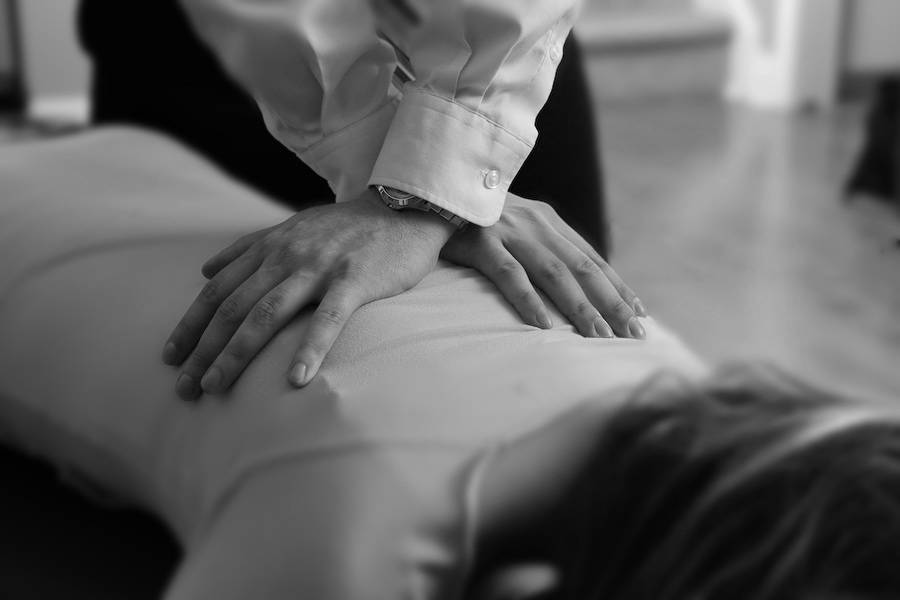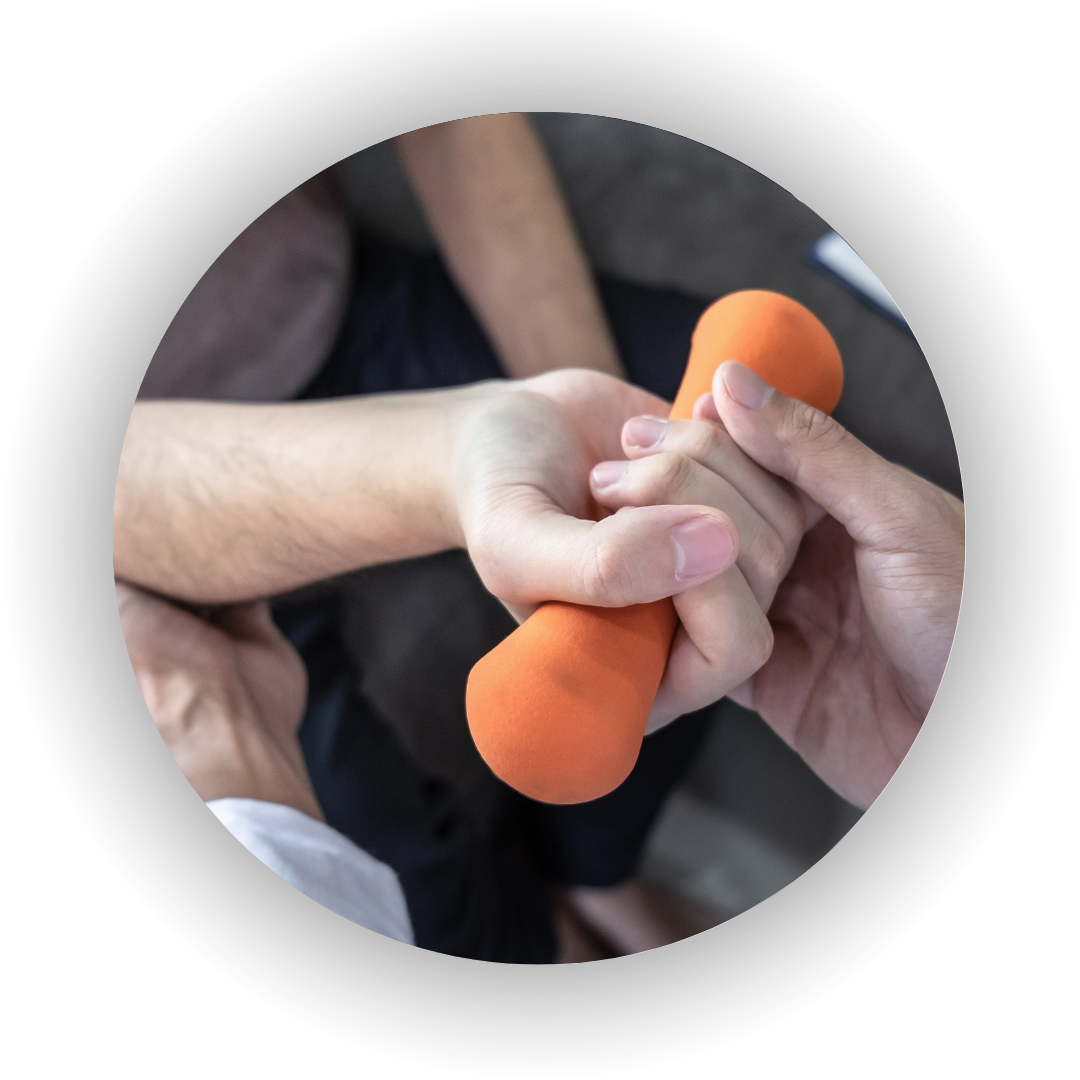Why Choose Our Chiropractic Approach?
Unlike traditional chiropractic clinics that focus solely on spinal adjustments, we take a full-body, functional approach. Our treatments address:
Joint Alignment & Stability
Restoring proper motion to the spine and extremities.
Muscle & Fascia Balance
Relieving restrictions that contribute to pain and dysfunction.
Movement Optimization
Ensuring your body moves efficiently and pain-free.
Nervous System Function
Supporting the body’s ability to heal and perform.
We combine modern chiropractic care with soft tissue therapy and rehabilitation to create a complete, personalized healing experience.
Our Chiropractic Techniques
At Mountain Movement Center, we customize every treatment using a blend of traditional and advanced chiropractic techniques:
The Day Method
Our signature approach, created by Dr. Michael Day, integrates soft tissue therapy, chiropractic, and rehabilitation for faster recovery and gentle, effective adjustments. This method is graded to fit each patient’s comfort level—from newborns to seniors to athletes.


Diversified Chiropractic
A hands-on, full-body approach to joint balancing and spinal adjustments, incorporating the best of traditional chiropractic techniques.
Flexion-Distraction
Ideal for disc injuries and lower back pain, this method uses a specialized table to create gentle spinal decompression, relieving pressure on nerves and muscles.


Activator Method
A gentle, spring-loaded instrument adjustment that precisely moves restricted joints without force. Perfect for patients who prefer a low-force alternative to traditional adjustments.
Myofascial Release Therapy (MRT)
Soft tissue techniques that release tension in muscles and fascia, restoring mobility and reducing chronic pain. This technique is often combined with chiropractic care for optimal results.


Cranial Balancing
A specialized technique addressing TMJ dysfunction, headaches, and pediatric cases, focusing on fascia release and skull alignment.
Low-Force Mobilization
Gentle joint mobilization for acute injuries, elderly patients, or those apprehensive about chiropractic adjustments.

More Than Spinal Adjustments—A Whole-Body Approach
Chiropractic care at Mountain Movement Center extends beyond just the spine. We work on muscles, fascia, and movement mechanics to ensure:
Pregnant women experience reduced pain and better pelvic alignment
Children develop with proper spinal alignment and mobility
Athletes move stronger, faster, and pain-free
Every treatment begins with a Movement IQ assessment, mapping out joint function, muscular imbalances, and movement patterns—so we can design a customized plan to get you feeling and moving at your best.
FAQs
At Mountain Movement Center, we know that starting a new approach to healing can bring up a lot of questions. Whether you're wondering about our treatment methods, what to expect on your first visit, or how our integrative approach differs from traditional chiropractic care, we've got you covered. Here are some of the most common questions we receive—because we believe clarity leads to confidence in your healing journey.
Insurance, Costs & Care Plans
Each case is unique. Recent injuries? You’ll likely see fast results. Chronic pain for years? It may take longer. If you’re not improving, we re-evaluate and adjust the plan or refer you to another specialist.
Yes! Most of our treatments are HSA/FSA eligible, allowing you to use pre-tax dollars for your care.
We provide a free benefits check to help you understand your coverage. Many have some level of coverage. Some of our specialized treatments are not fully covered by insurance. That said, the cost of fixing your back is often less than a few takeout meals! And for the time spent with a doctor we are the most fair priced in Greenville.
Absolutely not! Our goal is to fix the root issue and get you back to moving pain-free. We design treatment plans that typically last 4-12 visits over 4-6 weeks depending on the severity of your condition and how long you have had it.
Your first visit includes:
✔️ A detailed movement analysis
✔️ Neurological & soft tissue testing
✔️ Personalized treatment plan
✔️ Hands-on treatment (if applicable)
We focus on getting you relief and a clear path forward right away!
Nope! We are primary care physicians for muscle, joint, and nervous system issues, meaning you can book directly with us.
The cost of a chiropractic visit without insurance varies depending on location, provider expertise, and the type of treatment needed. At Mountain Movement Chiropractic & Natural Health, we structure our pricing to be affordable and transparent. An initial visit, which includes a full assessment, movement analysis, and personalized treatment plan, generally ranges from $100 to $200. Follow-up visits typically range between $50 and $100, depending on the complexity of care.
We also offer tiered choices of care, meaning patients can choose a level of service that fits their budget while still receiving high-quality treatment. If you’re curious about costs for your specific needs, you can reach out to us for a personalized quote.
It depends on your plan. Many insurance providers do cover chiropractic care—especially for musculoskeletal complaints like back or neck pain, which often overlap with sports injuries. However, coverage may vary for performance optimization or preventive care. At Mountain Movement, we’re transparent about costs and can verify your benefits or provide superbills for reimbursement. And for services outside of typical coverage, we offer options that are still accessible—because your health shouldn't be limited by a policy.
Treatment Approach & Customization
We only recommend X-rays when absolutely necessary. If your case warrants imaging, we will refer you to a trusted local imaging center we have a relationship with.
No! We treat a wide range of conditions including:
✔️ Sports injuries (knee pain, tennis elbow, shoulder issues)
✔️ Headaches, TMJ dysfunction & dizziness
✔️ Posture imbalances & movement dysfunctions
✔️ Fascia-related pain & chronic tension
No problem! We offer multiple levels of care beyond traditional adjustments, including Neuro Reset Therapy, soft tissue techniques, laser therapy, and movement correction. You can request "no popping" and still get great results!
Sports chiropractic is not a one-size-fits-all approach—it’s a toolkit customized to each athlete. We use:
- Chiropractic adjustments to restore joint mobility.
- MyoFascial therapy and IASTM (Instrument Assisted Soft Tissue Mobilization) to break up scar tissue and improve muscle function.
- Laser therapy to accelerate healing at the cellular level.
- Neuro Reset techniques to improve coordination and motor control.
- Movement analysis and instruction to identify and correct dysfunctional patterns before they cause injury.
And, of course, everything is tailored to the sport and demands of the individual. It’s personalized performance care.
Nerve Pain with Cold Laser therapy
Yes! Many cases of dizziness stem from cervical spine dysfunction and inner ear imbalances. We offer:
✔️ Spinal and muscular rebalancing
✔️ Vestibular retraining exercises
✔️ Soft tissue techniques for neck tension relief
Our team has extensive training beyond chiropractic care:
✔️ Doctor of Chiropractic (DC)
✔️ Certified Athletic Trainer (ATC) - Two of our doctors
✔️ B.S. in Exercise Physiology - Founder
✔️ Advanced soft tissue & neurological movement reprogramming training
Yes! We collaborate with orthopedists, physical therapists, primary care doctors, and other specialists to ensure you get the best care possible.
Special Populations & Unique Cases
Yes! We help post-surgical patients regain movement, break up scar tissue restrictions, and restore proper function.
Yes! We help kids, parents, and grandparents with everything from postural issues to sports injuries and pregnancy discomfort.
Many of our patients were skeptical at first—especially those who have tried traditional chiropractic, PT, or massage with no lasting results. We combine:
✔️ Muscle & fascia work
✔️ Neurological movement therapy (Neuro Reset)
✔️ Targeted rehab drills
✔️ Science-backed chiropractic care
Most patients feel a difference within a few visits!
Believe it or not, chiropractic care can begin as early as birth! Dr. Day regularly works with infants, toddlers, and children of all ages using extremely gentle, safe, and non-forceful techniques. Why so early? Birth can be a physically intense process for babies too—tiny misalignments can impact sleep, digestion, or even cause colic. Pediatric chiropractic adjustments are focused on supporting the nervous system and allowing your child to grow and develop at their fullest potential. It’s not about “cracking”—it’s about connection and gentle correction.
It depends on your body and your goals—but generally, most pregnant women benefit from chiropractic care once a week or every other week, especially during the second and third trimesters. In early pregnancy, visits might be less frequent, but as baby grows and the body shifts, regular care helps keep things aligned and functioning smoothly. At Mountain Movement, Dr. Day customizes a plan that fits your unique journey—whether you’re navigating morning sickness, hip pain, or preparing for a smoother labor. It's all about proactive care, not just pain relief.
Pediatric chiropractic care can help with a variety of common childhood issues, including:
- Colic
- Reflux
- Ear infections
- Sleep disturbances
- Torticollis (head tilt)
- Bedwetting
- Sensory integration issues
- Growing pains
It’s all about ensuring that your child’s spine and nervous system are developing in harmony. The nervous system controls everything—from digestion to sleep to immune function. Gentle adjustments can remove interference and allow your child to function at their best. And yes—no cracking involved! Just safe, age-appropriate techniques tailored to little ones.
Expect a warm, welcoming experience centered on connection—not just correction. Dr. Day will begin by chatting with you about your child’s health history, birth experience, and any concerns you have. Then comes a gentle physical exam, checking for posture, movement, and signs of nervous system tension. If needed, he’ll perform a gentle adjustment—using light touch, often just with fingertips or a small instrument.
Most kids feel calm or even nap during their visit! It’s quick, comfortable, and focused on making your child feel safe. And yes—parents stay right there the whole time. It’s a team approach to helping your child thrive.
Performance & Recovery Optimization
If stretching and massage haven’t helped, the problem is likely neurological, not just muscular. We focus on:
✔️ Rewiring movement patterns so muscles stop overcompensating
✔️ Breaking the cycle of tension at the brain level
✔️ Strengthening weak areas to prevent recurrence
We also offer massage, laser therapy, and take-home recovery tools.
Yes! We analyze how your foot, ankle, and knee interact and use joint work, movement drills, and laser therapy to reduce pain and improve function.
Not necessarily! In most cases, we help you modify rather than eliminate movement so you can keep training while healing.
We blend sports medicine, movement science, and advanced muscle therapy to fix pain at its source—not just mask symptoms. We offer:
✔️ Neuro Reset Therapy (fascial & nervous system work)
✔️ Sports chiropractic & movement optimization
✔️ Laser therapy & soft tissue work
✔️ Custom rehab & performance programs
We’re here to get you moving better, faster. Not just a quick crack and send-off.
From sprained ankles to shoulder strains and chronic overuse injuries, chiropractors like Dr. Day are skilled at addressing a wide spectrum of sports injuries. We frequently work with athletes dealing with:
- Low back pain
- Sciatica
- Neck and shoulder injuries
- Knee pain
- Tennis and golfer’s elbow
- Concussion recovery
Using chiropractic adjustments, soft tissue work, movement instruction, and functional testing, we develop a plan tailored to each athlete’s sport and body mechanics.
Definitely. You don’t have to be a pro to benefit from professional-grade care. In fact, many amateur athletes wait too long—until pain or dysfunction sets in—before seeking help. At Mountain Movement, we believe in proactive care. By addressing imbalances early and teaching movement patterns that build resilience, we help amateur athletes not only avoid injuries but enjoy their sport longer and stronger.
This depends on your training load, sport, and goals. Some athletes benefit from weekly sessions during peak season; others may only need a tune-up once or twice a month. At your first visit, we assess your movement, history, and recovery patterns to create a plan that works with your life—not just your schedule. Remember: the goal isn’t just to fix what’s broken, but to build something stronger. Think of chiropractic like brushing your teeth—it’s part of ongoing health hygiene for your body.
Yes—100%. When your body is aligned and functioning without interference, you perform better. It’s that simple. Chiropractic care removes restrictions in the spine and joints, which boosts mobility, balance, and neural communication. That means faster reaction times, smoother movement patterns, and more efficient force output. At Mountain Movement, we go a step further by integrating movement instruction and functional assessments to ensure your body isn't just pain-free—it’s performing at its peak. Chiropractic is like fine-tuning your engine before the race.
Prevention starts with awareness—and that’s where chiropractic shines. By identifying restrictions, imbalances, or compensation patterns before they become injuries, we help athletes stay ahead of the curve. Adjustments restore proper joint mechanics, while soft tissue work and movement training enhance muscular coordination and stability. It’s like getting a tune-up before the check engine light comes on. At Mountain Movement, we don’t wait for pain to appear—we help you build a resilient, adaptable body that can handle life’s demands.
Expect more than just a “crack and go.” At Mountain Movement, every session is an integrated experience. We start with a conversation about your training, goals, and any issues you're noticing. Then we move into a functional assessment—how your body moves, where it’s restricted, and what it needs to perform better. From there, treatment may include chiropractic adjustments, myofascial release, laser therapy, or movement instruction. Every visit is hands-on, educational, and empowering. You’ll leave not just feeling better—but moving better, too.
Experience the Difference
in Chiropractic Care
At Mountain Movement Center, we believe chiropractic should be gentle, effective, and tailored to every patient. Whether you need relief from pain, want to enhance performance, or improve mobility, we’re here to help.

